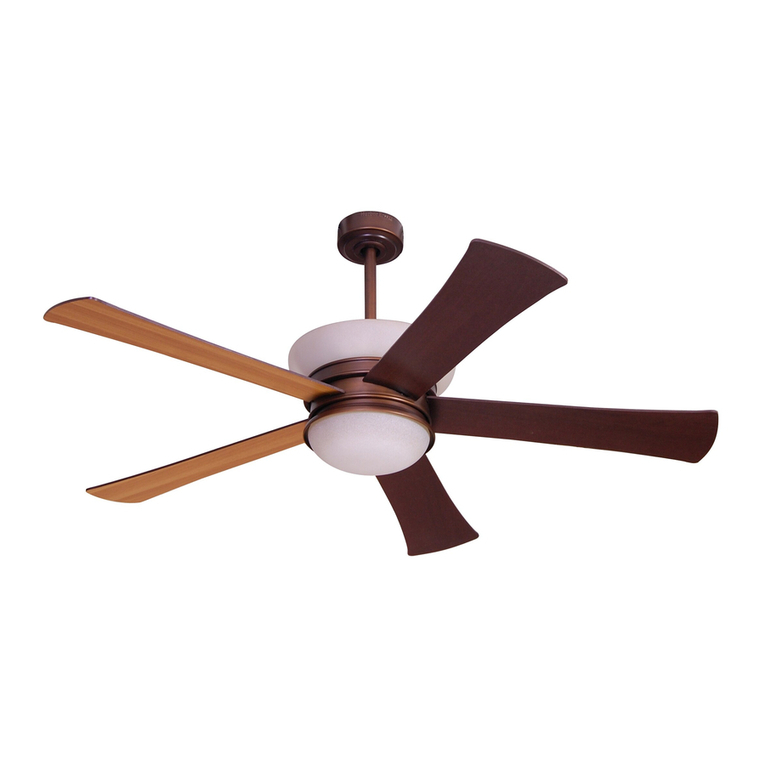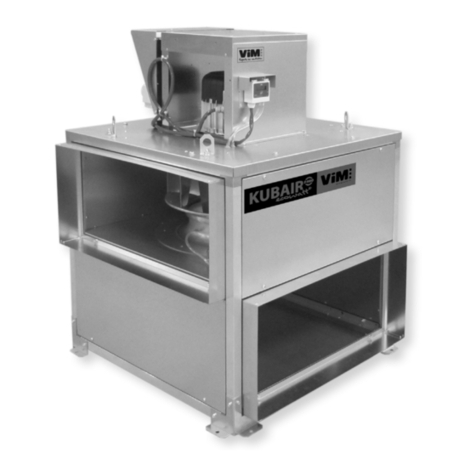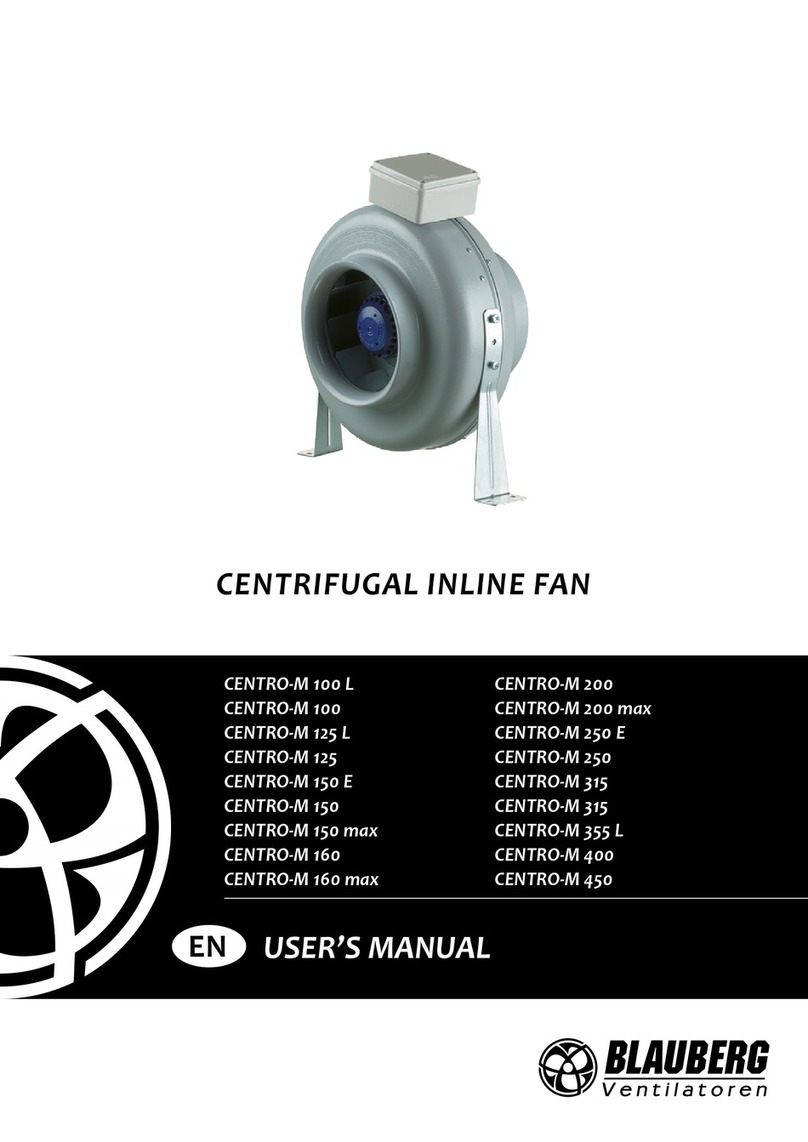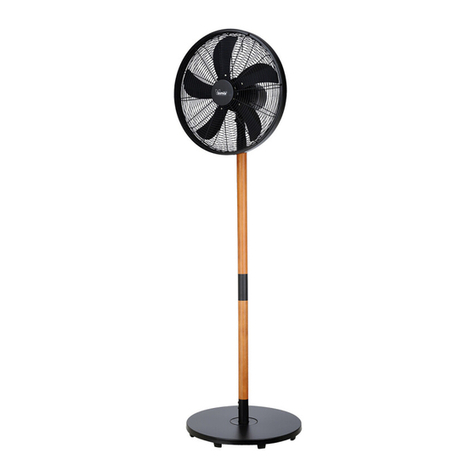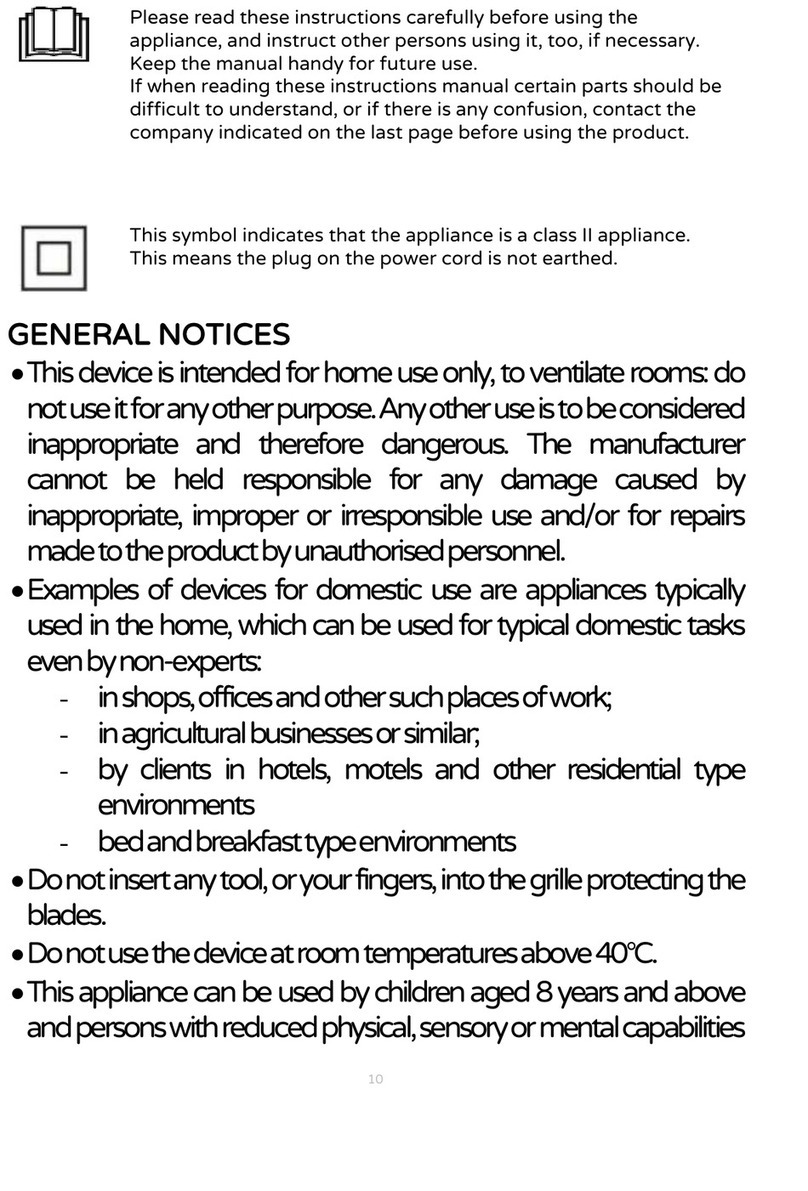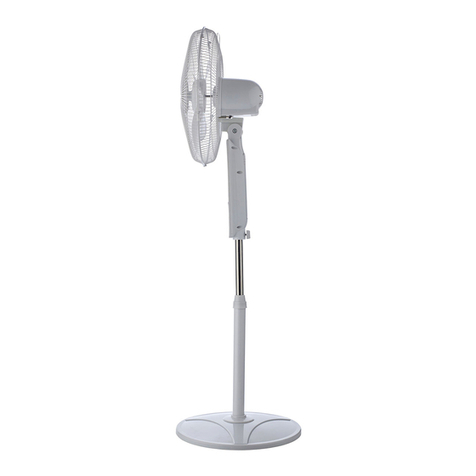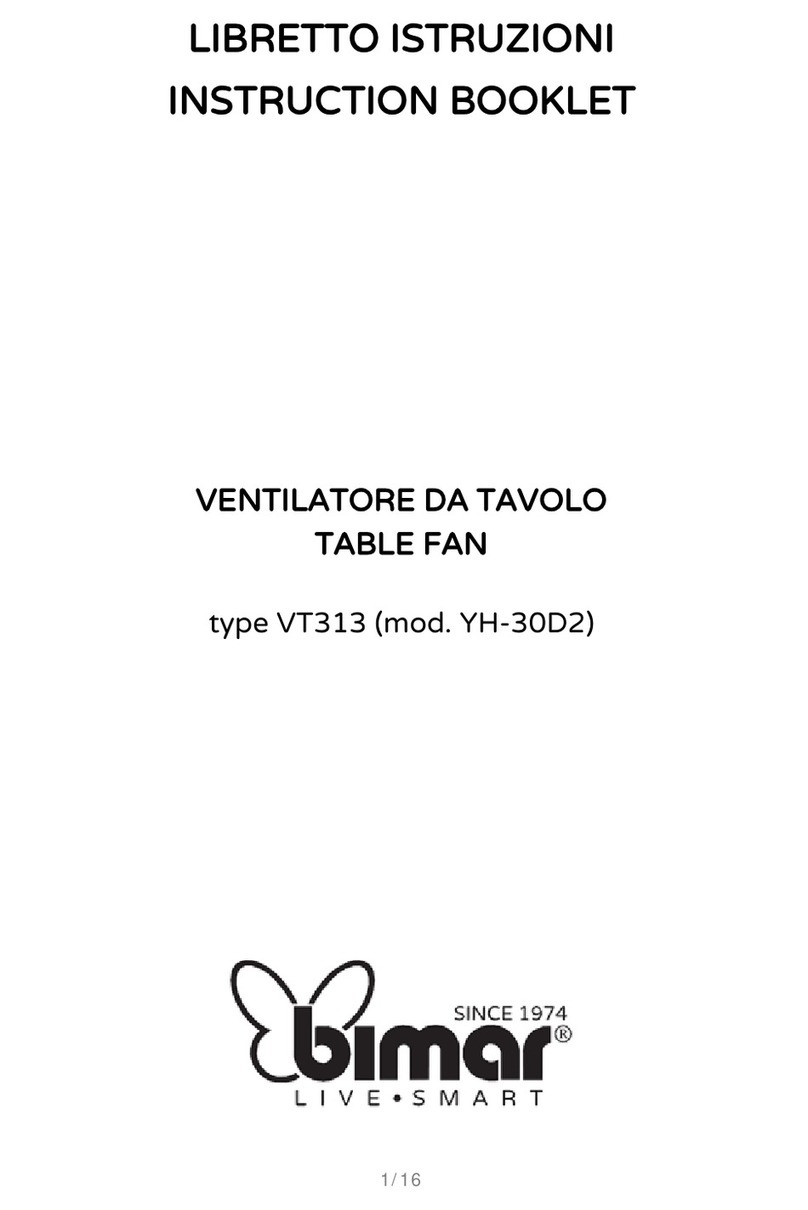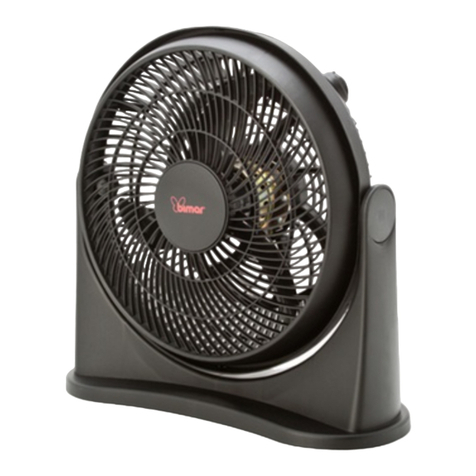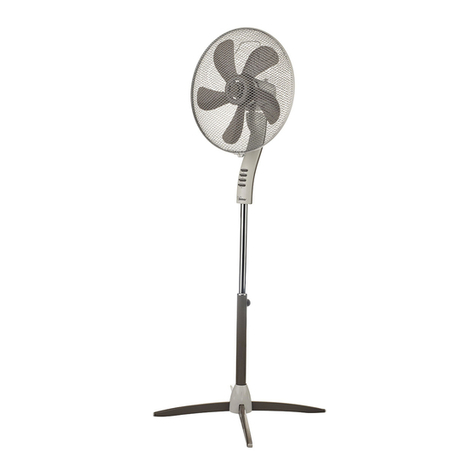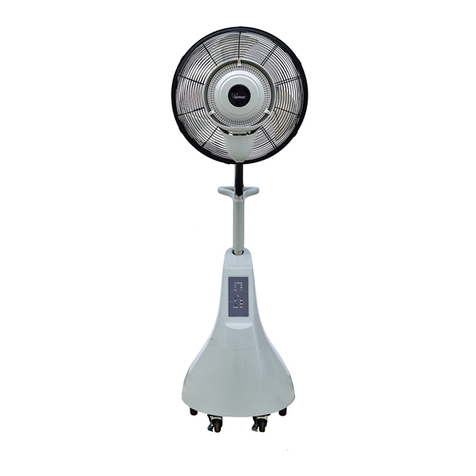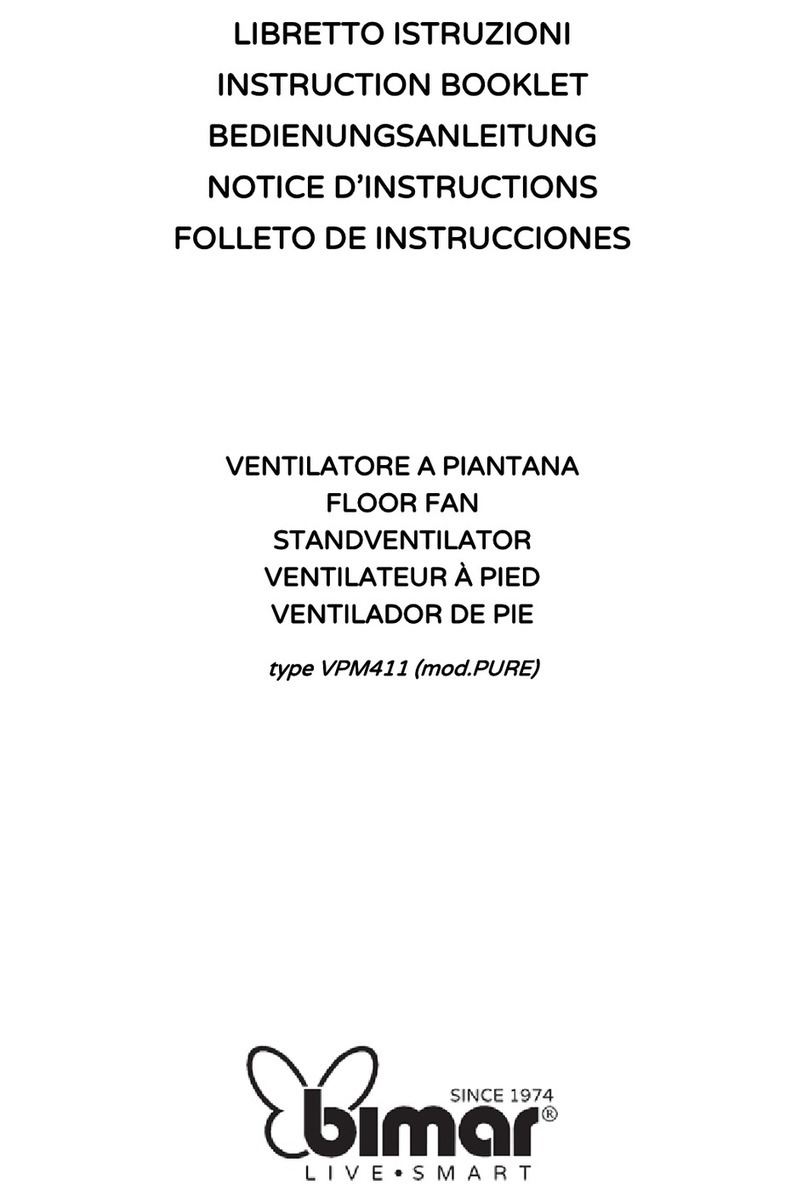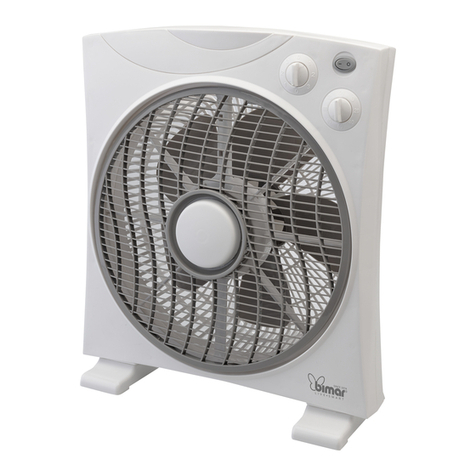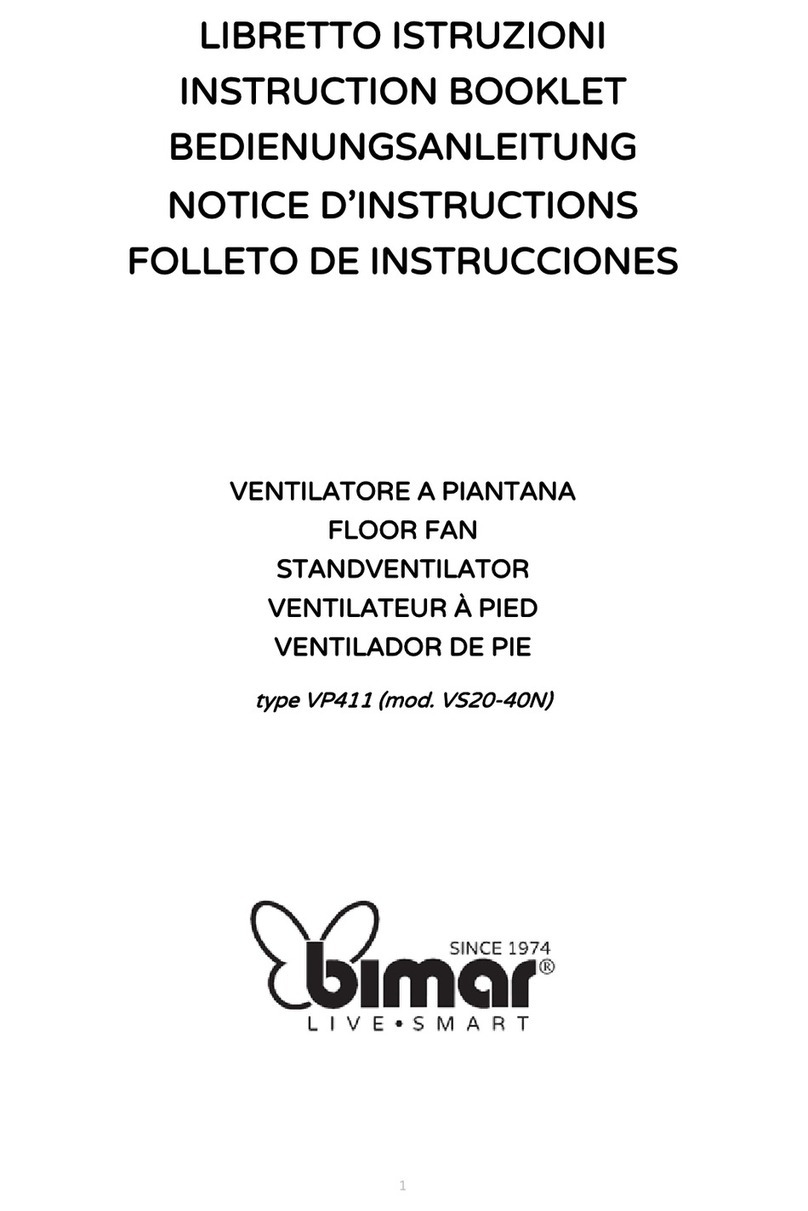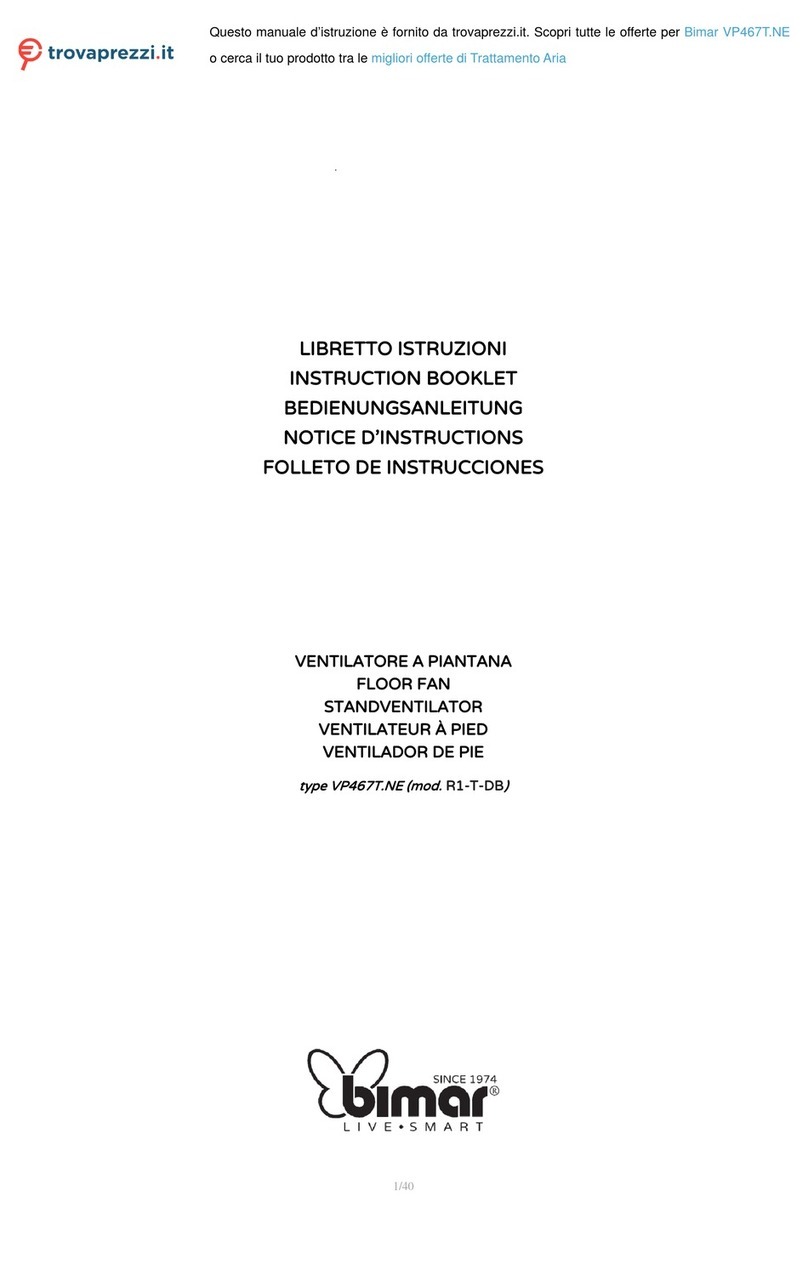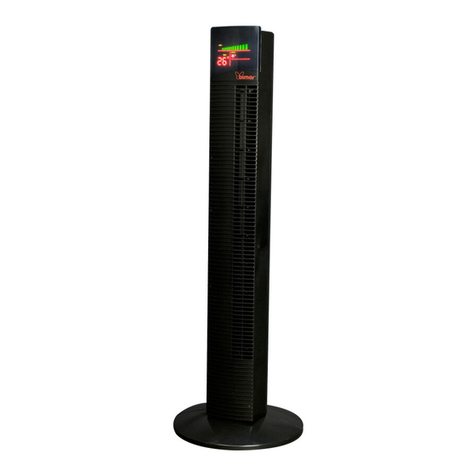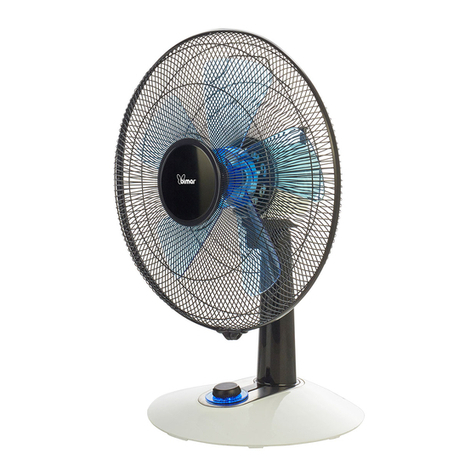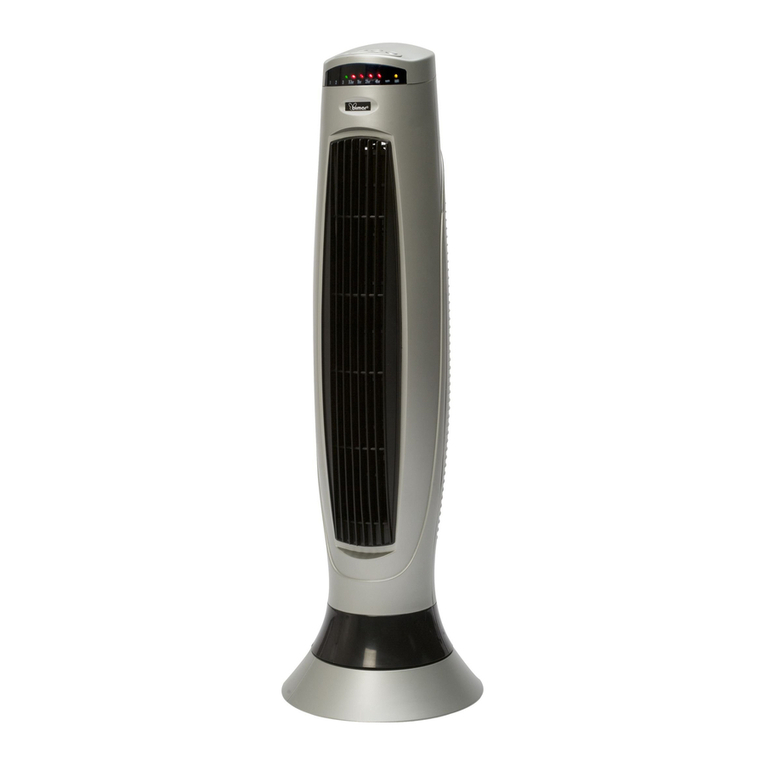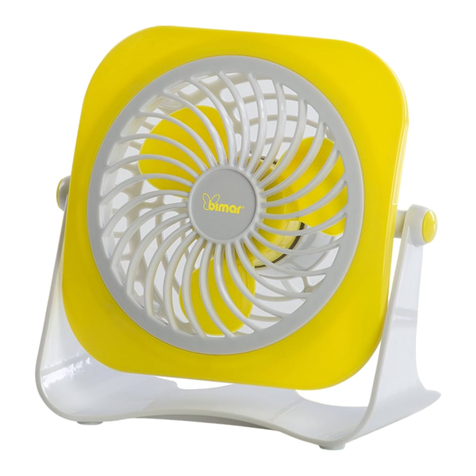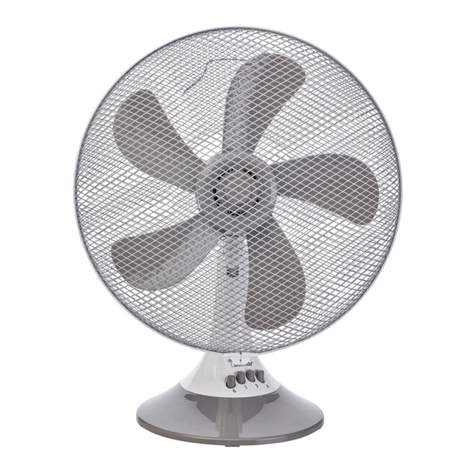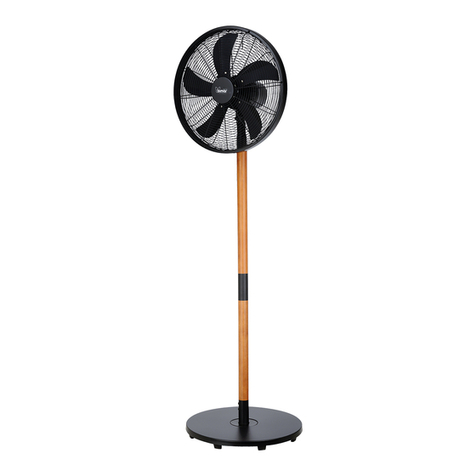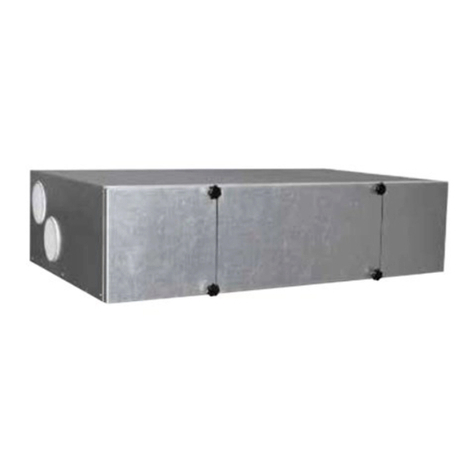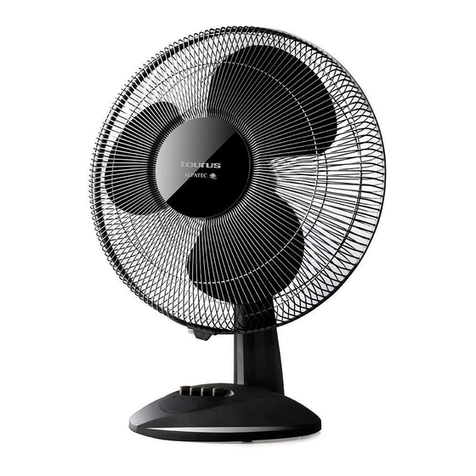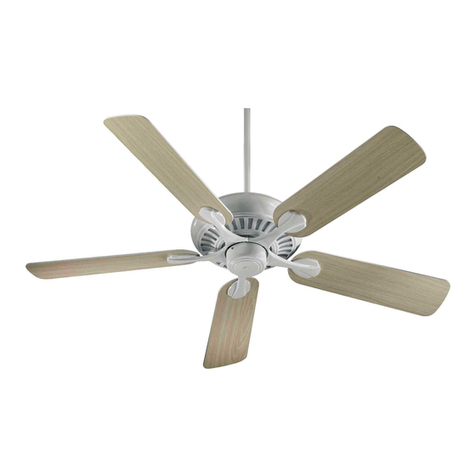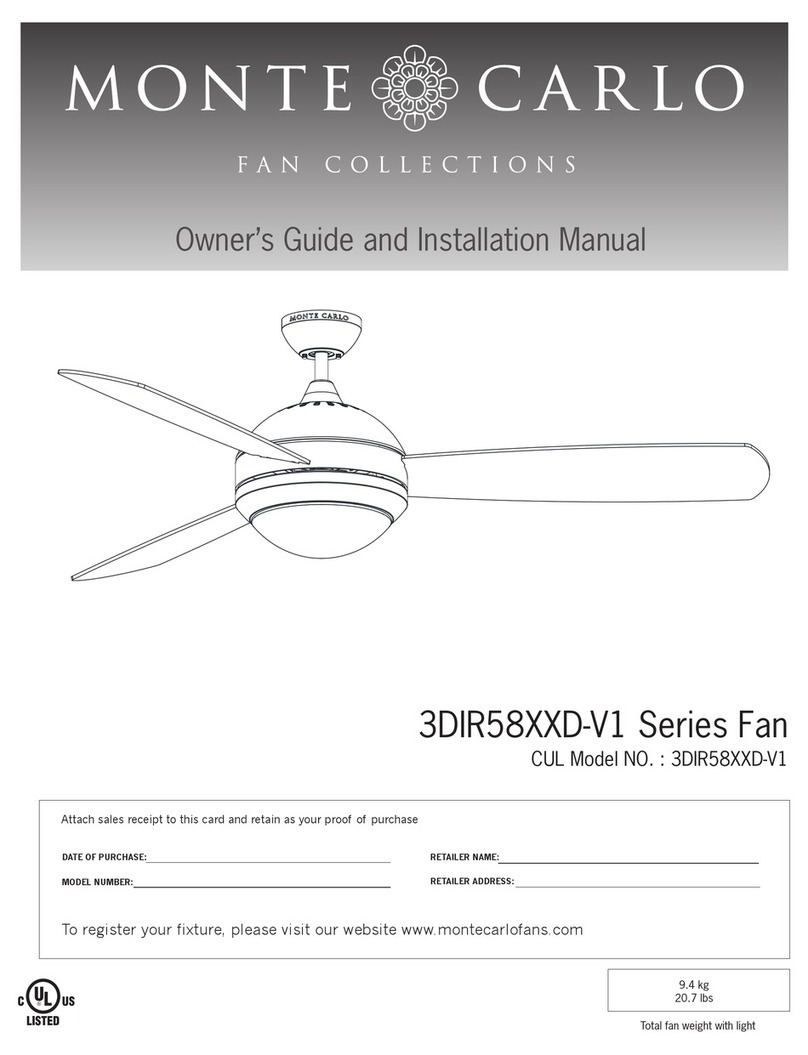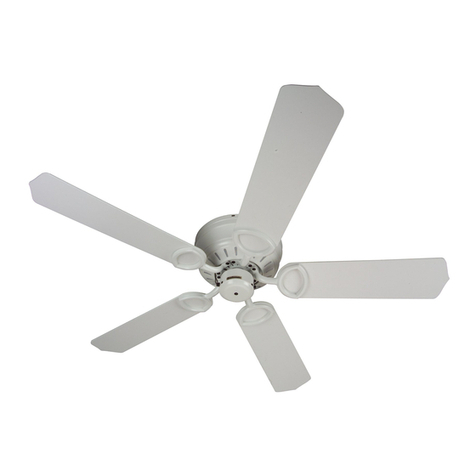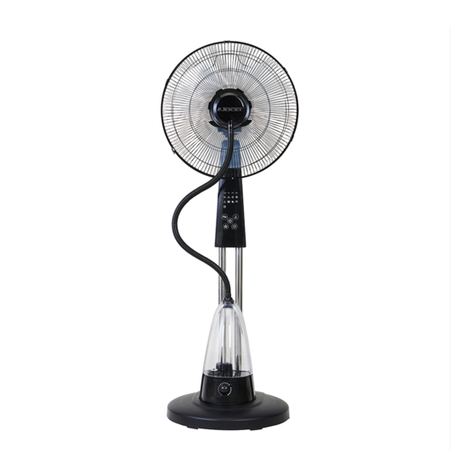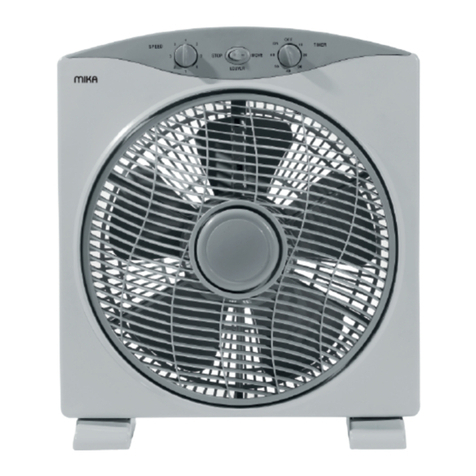
8/48
•Se installato in una stanza da bagno, oltre che all’altezza scritta al paragrafo precedente;
l’apparecchio deve essere installato in modo che gli interruttori e gli altri dispositivi di
comando non possano essere toccati da una persona che si trovi nella vasca da bagno o
nella doccia.
Prima di ogni utilizzo verificare che l’apparecchio sia in buono stato, che il cordone elettrico
non sia danneggiato: se il cavo di alimentazione è danneggiato, esso deve sostituito dal
costruttore o dal suo servizio assistenza tecnica o comunque da una persona con qualifica
similare, in modo da prevenire ogni rischio.
: il ventilatore può essere utilizzato solo se correttamente assemblato in buono stato.
Le funzioni del ventilatore si azionano sia con la tastiera del pannello comandi, e con il telecomando
che deve essere puntato frontalmente (distanza max di circa 4m) verso il pannello comandi, e prima
ancora bisogna inserirvi le batterie (aprire lo sportello posteriore e inserire due batterie tipo “AAA”
rispettando la polarità, richiudere lo sportello), non incluse nella confezione.
Non permettere ai bambini di sostituire le batterie.
Raccomandiamo di sostituire contemporaneamente tutte le batterie. Non mischiare batterie già
utilizzate e batterie nuove. Per lunghi periodi di inattività del telecomando togliere le batterie.
Inserire la spina nella presa di corrente.
1) Per accendere il ventilatore, premere il tasto del telecomando “SPEED” o del pannello
comandi. “”
2) Per selezionare la velocità desiderata in modalità normale “ ”, premere
ripetutamente il tasto “ ”: sul pannello comandi o del telecomando “SPEED”, si
illuminerà la spia “” e la spia corrispondente alla velocità selezionata
(=minima, =media, = massima).
Oscillazione orizzontale (destra-sinistra):
si ottiene premendo l’apposito tasto “SWING” del
telecomando o del pannello comandi (14). Per disattivare l’oscillazione, premere nuovamente
il tasto “SWING”.
Inclinazione verticale (alto-basso):
si regola impugnando il corpo motore e dirigendolo nella
direzione desiderata; avvitare l’apposita vite (10) per bloccare il corpo motore nella posizione
desiderata.
questa funzione consente di impostare il tempo di funzionamento, al termine del quale
l’apparecchio si arresta automaticamente.
•Per impostare il tempo di funzionamento, premere ripetutamente il tasto “TIMER” del
telecomando: ad ogni pressione del tasto varia il tempo impostato, e sul pannello comandi
si illumina la spia luminosa corrispondente al tempo selezionato (0,5 ora- 1 ora - 2 ore - 4
ore ): il tempo massimo è di 7ore e 30’.

